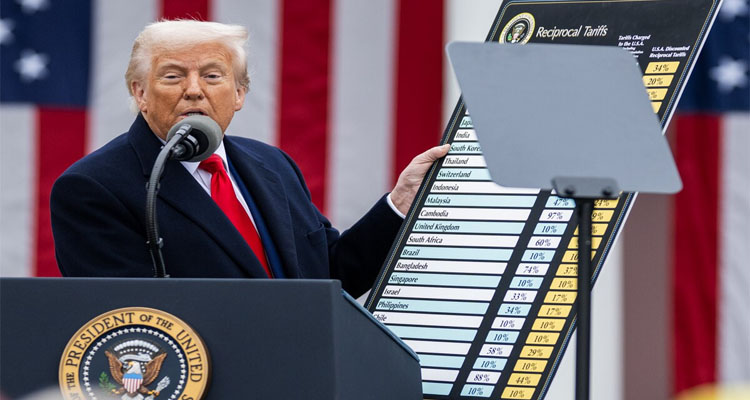Since taking office, U.S. President Donald Trump has pursued aggressive trade policies to protect American industries, including imposing tariffs on imports from various countries—even U.S. allies. The global trade war escalated on April 2, dubbed « Liberation Day » by Trump, causing market disruptions and raising concerns about global growth, especially in the Arab world.
Many Arab economies, closely linked to U.S. trade and the dollar, are feeling the impact. In 2024, U.S. trade with the Middle East and North Africa (MENA) reached $141.7 billion—$80.4 billion in exports and $61.3 billion in imports—leaving a $19.1 billion U.S. trade surplus.
Top 10 Arab Countries by 2024 U.S. Trade Volume:
- UAE: $34.4B total; $27B exports (+8.5%), $7.4B imports (+12.9%)
- Saudi Arabia: $25.9B total; $13.2B exports (-4.8%), $12.7B imports (-19.9%)
- Egypt: $8.6B total; $6.1B exports (+36%), $2.5B imports (+6.7%)
- Morocco: $7.2B total; $5.3B exports (+37.3%), $1.9B imports (+12.3%)
- Qatar: $5.6B total; $3.8B exports (-18.3%), $1.8B imports (-10.3%)
- Jordan: $5.4B total; $2B exports (+30.9%), $3.4B imports (+15.4%)
- Kuwait: $4.1B total; $2.4B exports (-14.7%), $1.6B imports (-2.4%)
- Algeria: $3.5B total; $1B exports (-15.5%), $2.5B imports (-18.7%)
- Oman: $3.3B total; $2B exports (+5.1%), $1.3B imports (-20.2%)
- Bahrain: $2.9B total; $1.6B exports (-1.8%), $1.2B imports (+3.3%)

